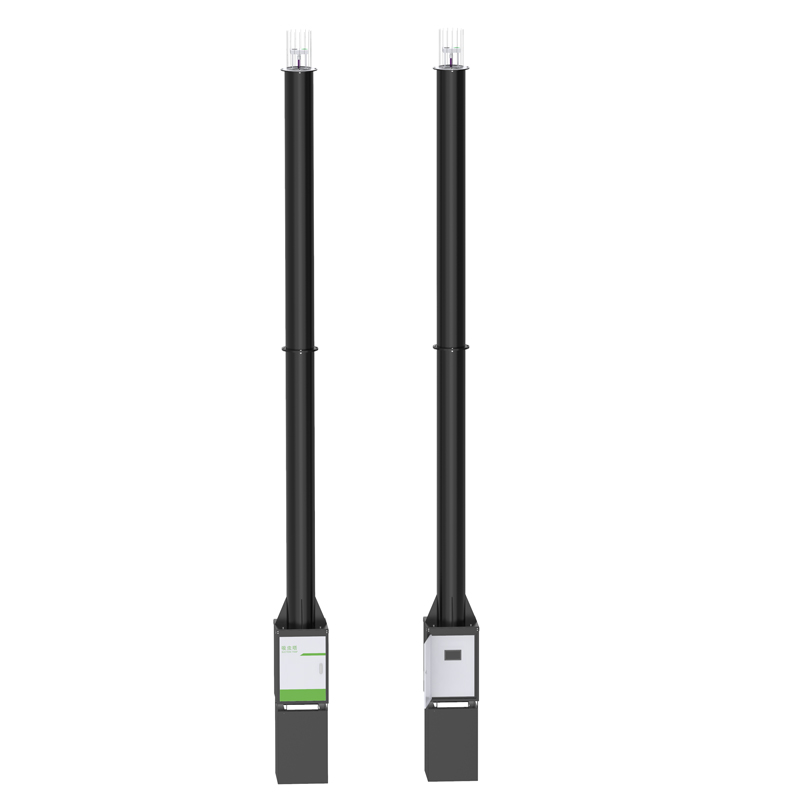Tianqiong Sensor IOT Technology Co., Ltd
Sales Manager:Ms. Emily Wang
Cel,Whatsapp,Wechat:+86 15898932201
Email:info@fengtutec.com
Add:No. 155 Optoelectronic Industry Accelerator, Gaoxin District, Weifang, Shandong, China

Sales Manager:Ms. Emily Wang
Cel,Whatsapp,Wechat:+86 15898932201
Email:info@fengtutec.com
Add:No. 155 Optoelectronic Industry Accelerator, Gaoxin District, Weifang, Shandong, China

Model:FT-CT1
Brand:tianqiong
1.Insect suction trap product overview
insect suction trap is about 8.3 m high and captures winged insects into a collection tray through a standing pipe. It is mainly used to sample smaller mobile insects.Insect suction trap (Suction Trap) is a new generation of image insect situation measurement and reporting tool developed by our company.It is a large-scale plant protection equipment that monitors the space-time dynamics of small migratory insects for a long time and is used for monitoring and ecological research of migratory pest populations.Its working principle is to suck small aphid insects flying above into the lower sample collection bottle through the strong suction of the aerodynamic device, and can be used for medium- and long-term monitoring.It can be widely used in agriculture, forestry, animal husbandry, vegetables, tobacco, tea, medicinal materials, gardens, orchards, urban greening, quarantine and other fields.
2.Insect suction trap function description
The suction of the fan at the base of the equipment generates suction force near the pipe opening at the top of the tower (8.3 m in height of the flukestone tower), and small insects passing or moving near the top of the tower are sucked into the sample collection disk at the base of the equipment (the collection port filters large pests, adds bird-proof and rain-proof caps to ensure that rainwater does not enter the machine).The camera takes pictures (taken once every 30 minutes).The pictures are transmitted to the cloud server.After AI data identification and processing, the insect species are automatically counted and counted.The monitoring personnel can remotely view and count the types and numbers of target insects through the PC and mobile APP to obtain real-time and accurate population dynamic information of the insects.Under unsupervised conditions, system operations such as insect luring, insect killing, insect body dispersion, photography, transportation, collection, and drainage can be automatically completed.Then, wireless transmission technology and Internet of Things technology are used to upload environmental meteorological and pest situations to the designated agricultural cloud platform in real time to analyze and predict the occurrence and development of pests, provide services for modern agriculture, and meet the needs of insect situation prediction and specimen collection.
3.Insect suction trap function characteristics
1.The upper and lower far infrared insect body treatment chambers have a mortality rate of no less than 98%, and the completion rate of insect body is not less than 95%.
2.Rainworm separation technology, automatically separates rainwater from insects
3.Light control technology, automatic power-on detection at night, automatic light turn off during the day, standby time, and work without instantaneous strong light
4.High-definition 500W camera
5.Built-in positioning function, you can view device site and other data on the platform map, making it easier for users to view it.
6.The insecticide warehouse, drying warehouse, camera, etc.can be controlled remotely manually
7.The touch screen can display the current working mode, communication status, insecticide bin, drying bin real-time temperature, current lighting value, rainfall status and the current operating status of each component of the equipment.
8.Infrared counting sensor specially customized for insect detection and reporting systems, counts insect killing numbers and has an accuracy rate of up to 99%.
9.The system transmits photos to the cloud server, and automatically counts and counts insect species after AI data identification and processing.
4.Insect suction trap main technical indicators
| Power supply voltage | 220V AC or solar power supply |
| Power consumption | Standby ≤25W, the whole lamp power is ≤200W |
| Communication method | 4G upload |
| Upload on the Internet | |
| Working environment | 0~70℃, 0~85% (relative humidity), no condensation |
| Fan | Axial flow fan |
| Auxiliary insect-induced light source | 20W purple light tube (main wavelength 365nm) |
| Far infrared insect body treatment chamber temperature | After working for 15 minutes, the temperature can reach 85℃±5℃ |
| Light tube start time | ≤5S |
| Insulation resistor | ≥2.5MΩ (leaking protection) |
| How to work | Automatically turn on and detect at night, automatically turn off the lights during the day, standby time, and change the working state without being instantly strong light |
| Camera pixels | 500W |
| Display | 7-inch touch display |
In contemporary society, air quality is intricately intertwined with our daily lives. Air pollution not only takes a toll on our physical well-being but also exerts adverse effects on the ecological environment and economic development. Globally, air pollution has given rise to a surge in respirator...
With the booming development of ecotourism, scenic weather stations have become common devices in major tourist attractions and ecological parks (such as artificial wetlands, ecological parks, botanical gardens, etc.). It is dedicated to the all - day automatic online collection of air cleanliness i...
As night fell, I was flying through the darkness as usual. Suddenly, I spotted a beam of light that lured insects ahead. Driven by instinct, my companions and I flew towards the light source without hesitation. Later I came to know that it was actually a nightmare from which there was no escape. Tha...
In the photovoltaic field, "black heart" is a serious quality issue, manifested as the luminous intensity of some areas inside the photovoltaic module being significantly lower than the normal level, presenting black or dark areas. This indicates that the performance of the battery cells i...